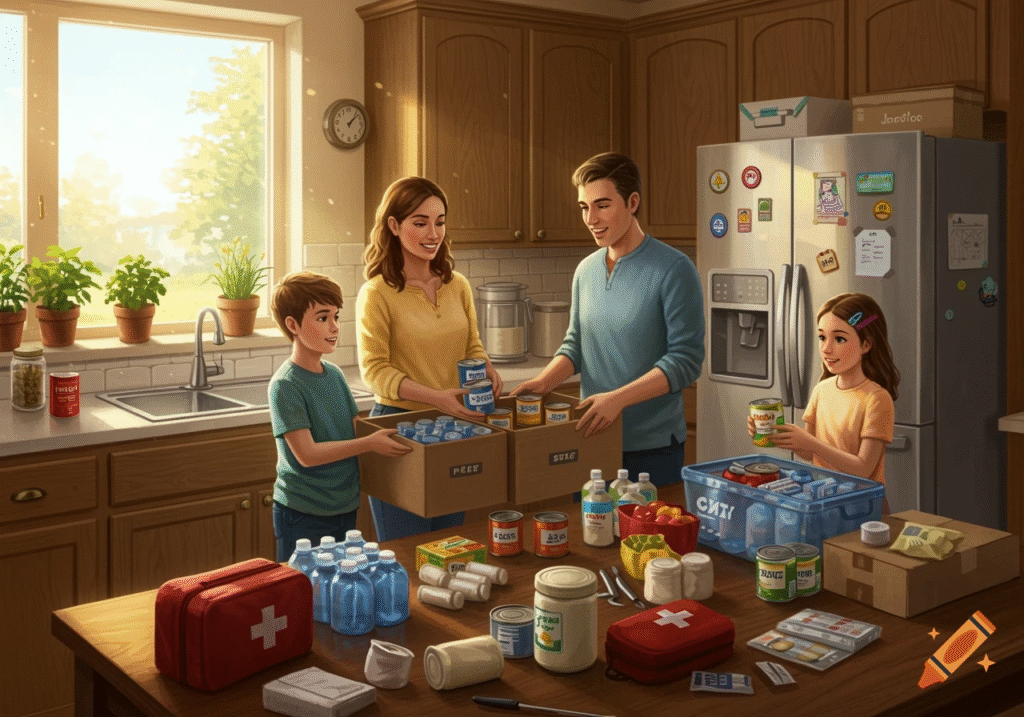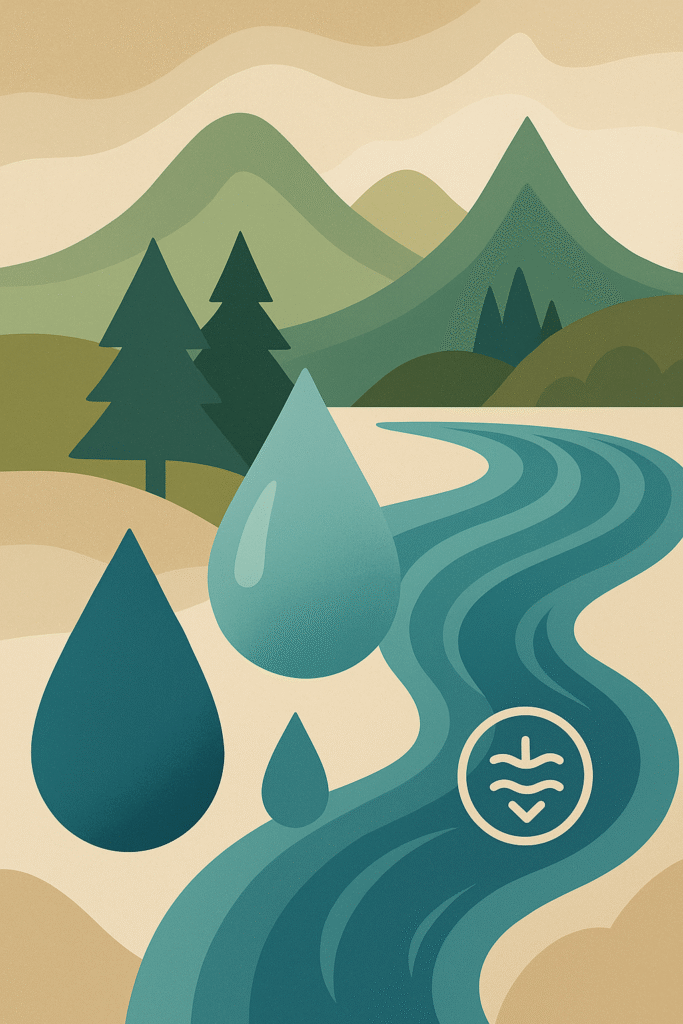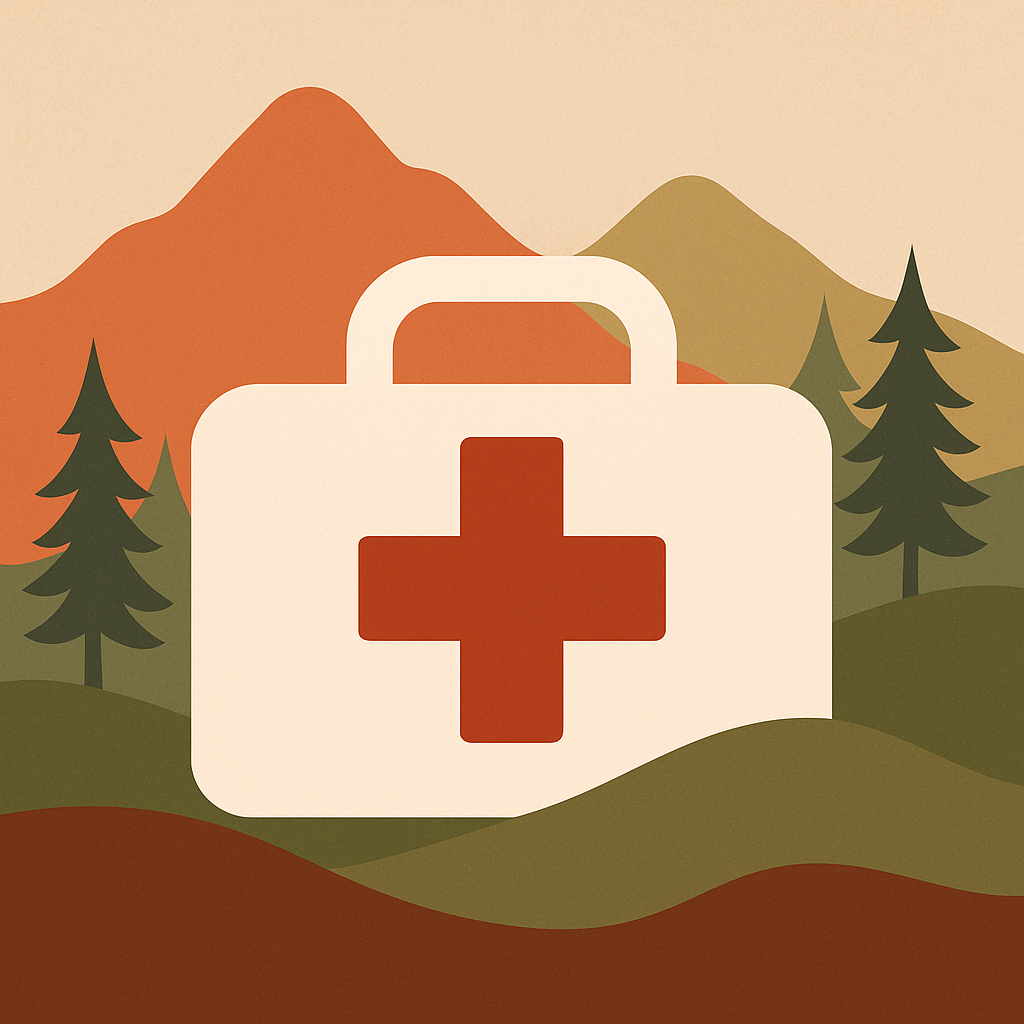Want to start prepping without overwhelm? If prepping feels like drinking from a fire hose, you’re not alone. Most folks stall out because they try to solve everything on Day One. The fix isn’t more gear—it’s a simpler plan you can act on today.
Why Overwhelm Happens
- Everything-at-once thinking. Trying to prep for every disaster burns time and cash.
- Gear tunnel vision. Fancy tools you’ve never used beat out basics you actually need.
- Apocalypse framing. Real preparedness starts with everyday disruptions: outages, storms, layoffs, supply hiccups.
Field truth: Preparedness is a skill set plus a small stack of supplies, built in order.
The Simple Framework On How To Start Prepping Without Overwhelm
- Risk-First: Prep for what’s most likely where you live.
- Needs-First: Water → Food → Shelter/Power → Medical → Security.
- Budget-First: Small, steady buys beat rare big splurges.
- Test & Tune: Practice now; fix gaps before they matter.
- Stay Flexible: Plans evolve. So should your kit.
Step 1 — Map Your Likely Risks (10 minutes)
Grab a notepad and list the top 3 you actually face.
- Weather: tornadoes, winter storms, heat waves, floods?
- Utilities: power/water outages, boil advisories?
- Life hits: job loss, medical events, car trouble?
- Geography: rural roads, one grocery in town, long commutes?
Decision: Pick one risk to prep for first. That’s your Week-1 focus.
Step 2 — Cover Essentials in This Order
Water
- Target: 1 gallon per person per day × 14 days at home.
- Add: a simple filter plus chemical backup (tabs or drops).
- Store: mix of jugs and containers you’ll actually rotate.
Pro Tip: Pre-filter silty water through a bandana or coffee filter before disinfection. Saves your main filter.
Food
- Target: 2–4 weeks of shelf-stable food you already eat.
- Build from meals: breakfast, lunch, dinner you’ll use anyway.
- Include: manual can opener, seasonings, cooking oil.
Pro Tip: Buy two of items you use weekly; stash one. Rotation handles itself.

Shelter & Power
- Warmth/cooling: wool blanket, emergency bivy, or safe heat source.
- Light: headlamp + batteries; spare flashlight.
- Power: small battery bank; consider a foldable solar panel if outages are common.
Medical
- First-aid basics you know how to use: assorted bandages, gauze, tape, elastic wrap, antiseptic wipes, pain/fever reducers, gloves.
- Personal meds: minimum 2–4 weeks (work with your provider).
Security
- Doors/locks, exterior lighting, and neighbors who know your name.
- Keep tools handy: multi-tool, duct tape, zip ties, paracord.
Step 3 — Budget Without Stress
Choose a lane and stick to it for 4 weeks:
- $25/week: Week 1 water; Week 2 staple carbs (rice/pasta); Week 3 protein (beans/canned meat); Week 4 lighting/batteries.
- $50/week: Double the above + first-aid expansions.
- $100/month: One focused category per month (e.g., October = water; November = food; December = power/lighting).
Pro Tip: Shop “boring.” Staples win: rice, beans, oats, pasta, canned meat, veggies, fruit.
Step 4 — Test Before You Need It
Run one drill each week:
- Blackout Evening (2–3 hrs): Lights off. Use only headlamps, power bank, and shelf-stable dinner.
- Water-Only Weekend: Every drink and cooking task uses stored water.
- No-Grocery 48: Eat only from your pantry and freezer. Note gaps.
After each drill, write a 1-page After Action Review (AAR): What worked, what failed, what to buy or learn.
Step 5 — Stay Flexible
- Build a PACE plan for your top needs:
Primary (tap) → Alternate (stored) → Contingency (filter) → Emergency (boil/chem). - Put maintenance on the calendar: rotate water, check batteries, replace meds, backflush filters.
Quick-Start Builds
72-Hour “Move” Kit (Keep it simple)
- Water: 3–6 liters total + compact filter
- Food: calorie-dense, no-cook plus a small stove/cup
- Light: headlamp + spare batteries
- Power: phone cable + battery bank
- First-Aid: basics + personal meds
- Tools: multi-tool, lighter, ferro rod, duct tape, paracord
- Comfort: gloves, beanie, socks, wipes, small cash
- Docs: copies in a zip bag
Two-Week Home Basics
- Water stored + treatment backup
- Pantry meals you’ll actually eat (+ spices, oil)
- Heat/cool plan, blankets, safe cooking method
- Lighting: headlamps/lanterns with spares
- First-aid + OTC meds restock
- Hygiene: TP, soap, trash bags, sanitizer
Common Mistakes & Easy Fixes To Start Prepping Without Overwhelm
- Buying for Instagram, not for life. Fix: Regular food, real tools, fewer toys.
- Gear you can’t run. Fix: Practice once a week.
- No water plan. Fix: Store it now; add filter + tabs.
- Never rotating. Fix: Eat what you store; store what you eat.
- Perfection paralysis. Fix: One action today beats ten intentions tomorrow.
One-Page Starter Plan On How To Start Prepping Without Overwhelm (Print This)
This Week
- Buy: 2 cases of water, manual can opener, headlamp + batteries.
- Stock: 6 pantry meals you already eat.
- Learn: How to disinfect water (boil, filter, chemical).
- Drill: Blackout Evening. Write a 10-line AAR.
Next Week
- Add: 10 lbs rice, 8 lbs beans/pasta, cooking oil, spices.
- Build: Basic first-aid kit; list personal meds to stock.
- Drill: No-Grocery 48.
Week 3
- Store: More water to hit the 14-day goal.
- Power: Battery bank; test phone charges.
- Drill: Water-Only Weekend.
Week 4
- Organize: Label bins; create a simple inventory sheet.
- Tune: Update AAR, set monthly rotation reminders.
Five Skills That Beat Fancy Gear
- Make safe drinking water three ways.
- Cook off-grid on a small stove.
- Basic first aid and wound cleaning.
- Read a map & use a compass.
- Read the weather and plan around it.
Bottom Line on How To Start Prepping Without Overwhelm
Start where you are. One gallon, one meal, one drill at a time. Small, steady reps turn “overwhelmed” into “ready.”
You may also like this blog post: 10 Essential First Aid Supplies for Preppers
Check out this recommended Survival Guide Here.





Pingback: Common Prepping Mistakes to Avoid (and What To Do Instead)